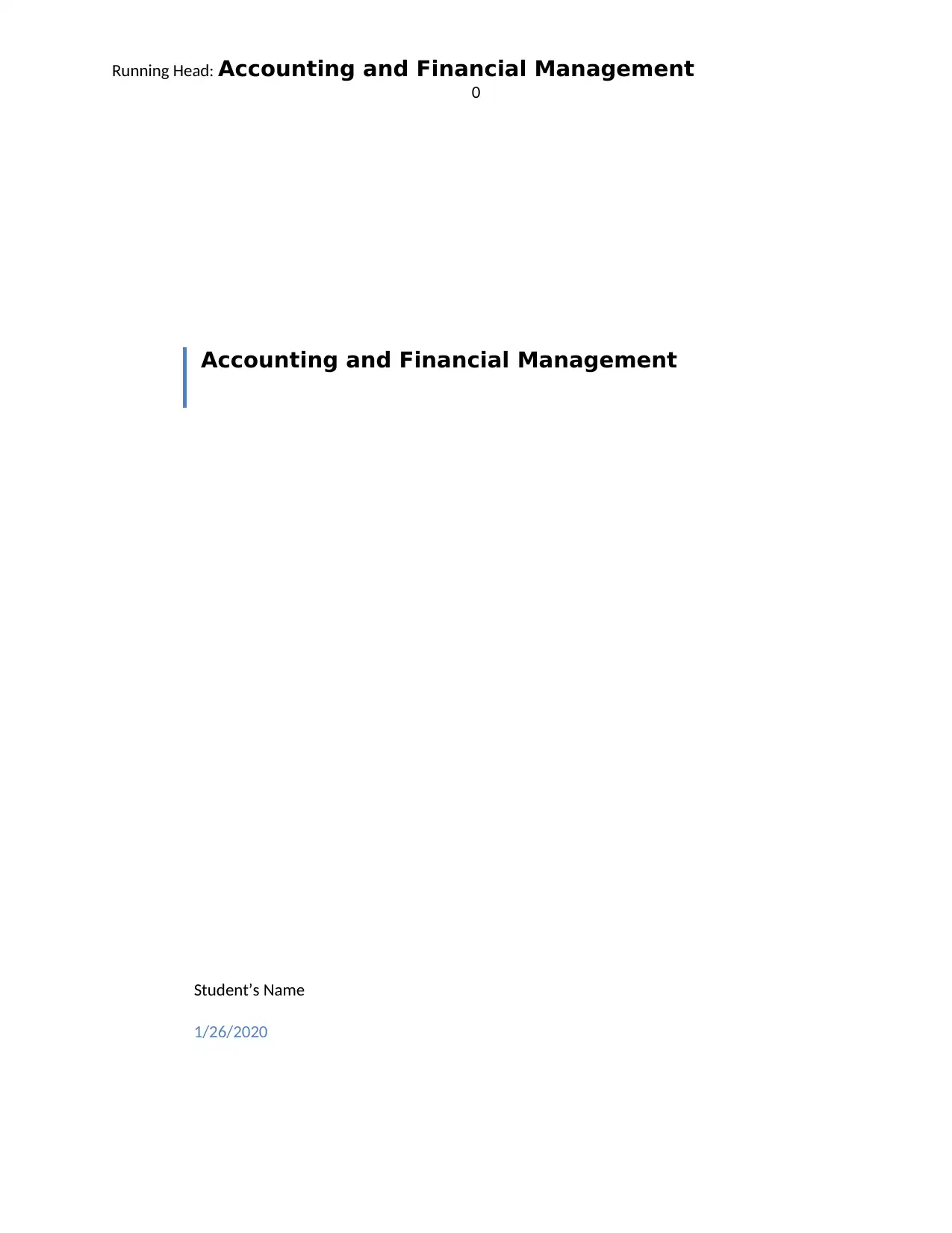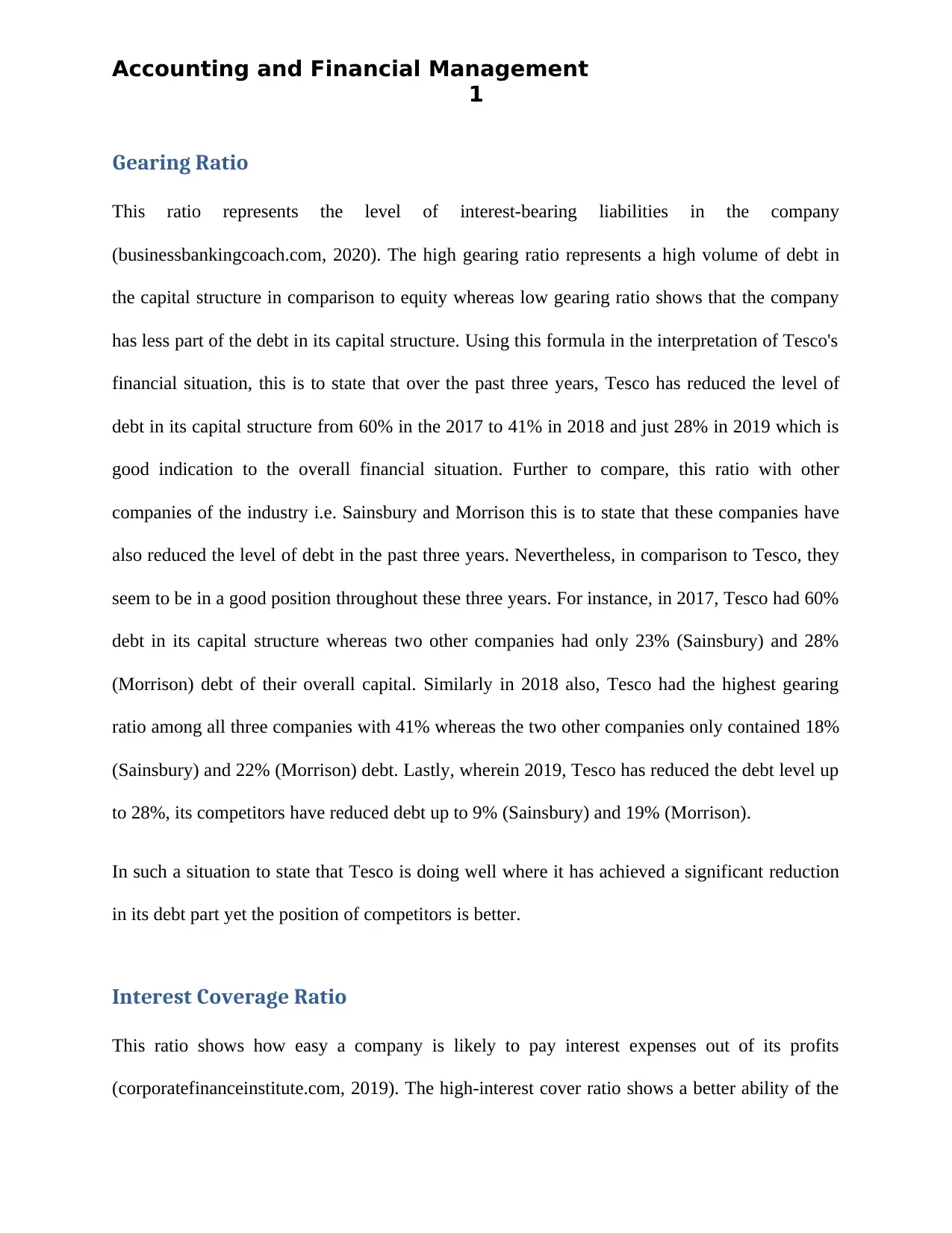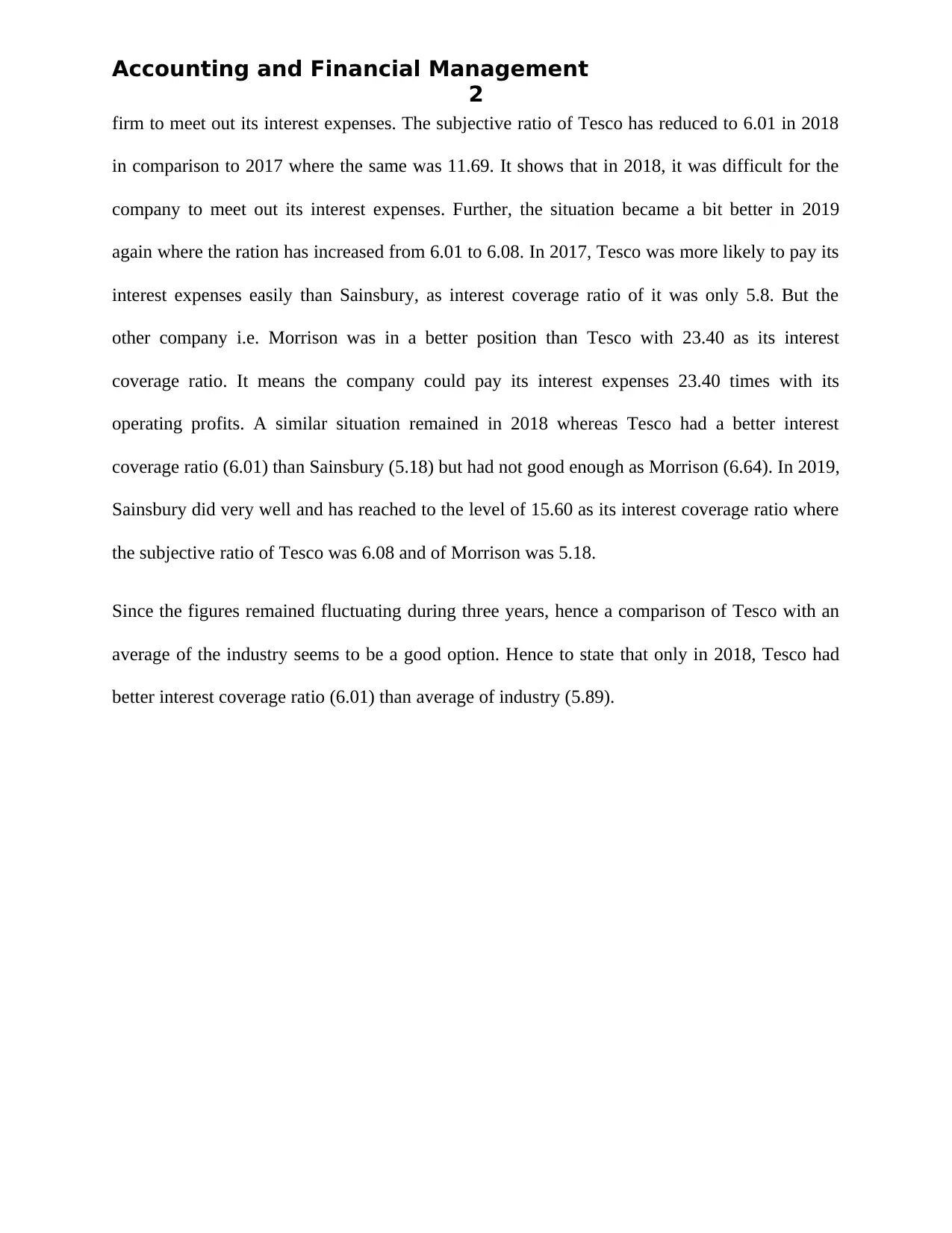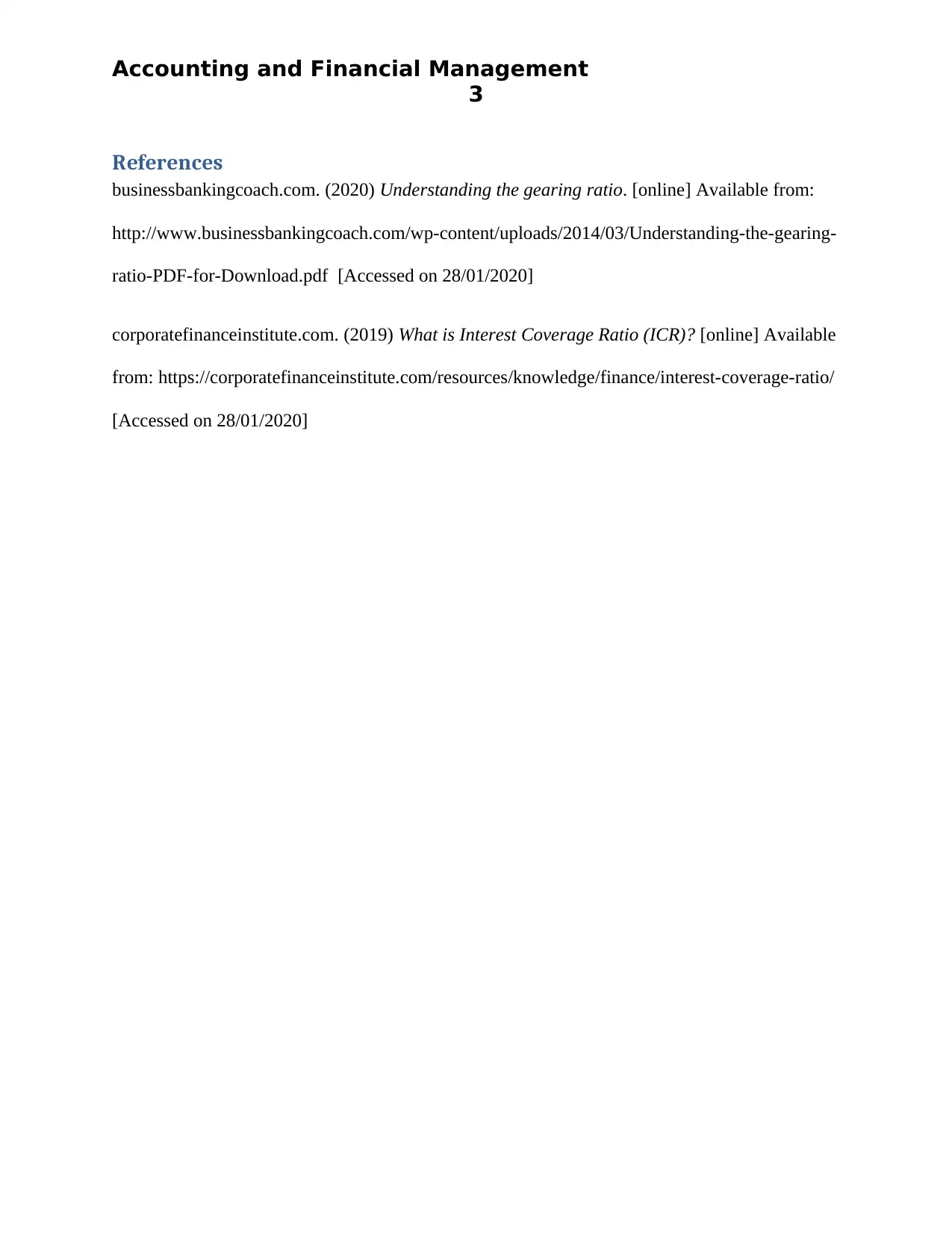Tesco's Financial Performance: Gearing and Interest Coverage Analysis
VerifiedAdded on 2022/08/20
|4
|678
|14
Report
AI Summary
This report provides a financial analysis of Tesco, focusing on the gearing ratio and interest coverage ratio over a three-year period (2017-2019). The analysis evaluates Tesco's debt levels and its ability to meet interest expenses, comparing its performance with competitors like Sainsbury and Morrison. The gearing ratio analysis reveals a reduction in Tesco's debt, while the interest coverage ratio indicates fluctuations in its capacity to cover interest payments. The report highlights Tesco's relative financial standing within the industry, considering its debt management and profitability compared to its competitors. The report uses the provided formulas to interpret the financial situations and draws conclusions about Tesco's overall financial health and performance in comparison to its competitors, providing insights into its financial stability and risk profile.
1 out of 4











![[object Object]](/_next/static/media/star-bottom.7253800d.svg)